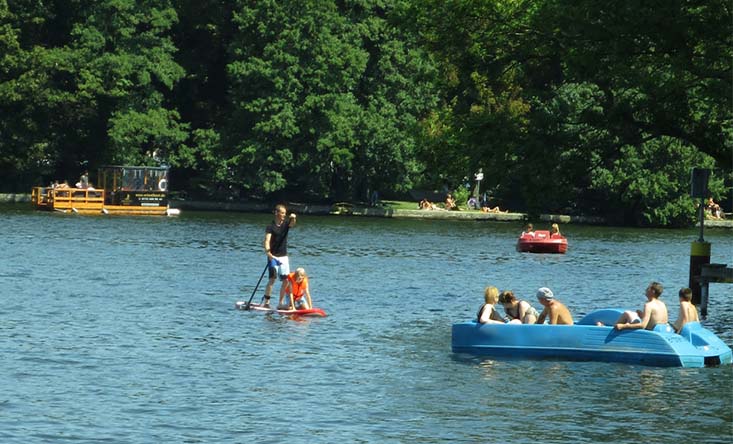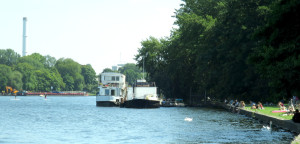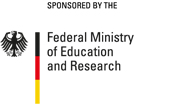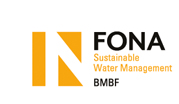FLUSSHYGIENE
Hygienically relevant microorganisms and pathogens in multi-functional rivers and water cycles – sustainable management of different types of rivers in Germany



RESEARCH FOR CLEAN BATHING WATER
Local recreation, drinking water production, transportation – rivers are used and made use of in many different ways. This means that high standards of hygiene and good quality water are prerequisites for public health. The revised EU Bathing Water Directive of 2006 (2006/7/EG) calls for the systematic collection of data on the sources of hygienic pollution and for the realisation of appropriate management measures. The directive thus executes the precautionary principle in the quality management of water bodies. In rivers, implementing the Bathing Water Directive poses a particular challenge: Methods for reliably predicting microbial pollution are still missing. However, without them local authorities cannot react in a timely and appropriate manner to transient pollution such as combined sewer overflows and rainwater discharges. This is why the partners of the joint project FLUSSHYGIENE want to further develop and test methods which deliver more information on faecal pollution.
GOALS

© Wolfgang Seis, Kompetenzzentrum Wasser Berlin gGmbH
The goal of the joint project FLUSSHYGIENE is to develop tools which enable complex, multi-functional rivers to be managed in such a way that the highest possible level of health protection can be ensured, without compromising their economic function. The partners of the joint project aim to achieve this by developing the necessary knowledge-, data- and decision-making essentials. They will also evolve guidelines and models for developing risk-based prediction tools and sustainable management strategies with regard to hygienic pollution in rivers. With the help of the experience gained, the partners of the joint project will then compile a guideline and a checklist for local authorities and water managers.
MODEL REGIONS
The project will study seven rivers which are divided into four model regions and which are very different with regard to river type and -structure, water quality, and types of use:
- The Spree-Havel river system in the city of Berlin
- The Isar and Ilz rivers in the state of Bavaria
- The Rhine and Mosel rivers near the city of Koblenz in the state of Rhineland-Palatinate
- The Ruhr river in the state of North Rhine-Westphalia
Key messages
- In order to protect bathers from short-term pollution, early warning systems were developed as well as a robust procedure for their set-up, which transfer the risk-based assessment approach of the EU Bathing Water Directive (BWD) onto short-term forecasts.
- For pathogenic viruses as well as viral- and bacterial indicators, reference values for discharges from sewage treatment plants, combined sewer overflows- and storm water discharges, as well as for degradation- and reduction rates in the rivers were determined.
- A necessity for complementing the list of monitoring parameters regulated in the EU-BWD was not derived.
- To predict the effectiveness of management measures in the urban drainage system and at wastewater treatment plants on the hygienic water quality downstream of the point of discharge, a universally applicable hygiene module was developed for the water quality model QSim.
- A transferable willingness-to-pay model to determine the benefit side (cost-benefit-analysis) of new bathing waters is available.
Further Information
Kontakt
-
Kompetenzzentrum Wasser Berlin gGmbH
Dr. Pascale Rouault
T: +49 30 53653 816
M: pascale.rouault@kompetenz-wasser.de -
Wolfgang Seis
T: +49 30 536 53 807
M: wolfgang.seis@kompetenz-wasser.de
Projektpartner
- Kompetenzzentrum Wasser Berlin gGmbH
- Bayerisches Landesamt für Umwelt
- Berliner Wasserbetriebe
- Bundesanstalt für Gewässerkunde
- Dr. Schumacher – Ingenieurbüro für Wasser und Umwelt
- inter 3 GmbH
- IWW Rheinisch-Westfälisches Institut für Wasserforschung gemeinnützige GmbH
- Ruhrverband Planungsabteilung
- Umweltbundesamt FG II1.4 Mikrobiologische Risiken
- Universität zu Köln Biozentrum der Universität zu Köln


 Deutsch
Deutsch




